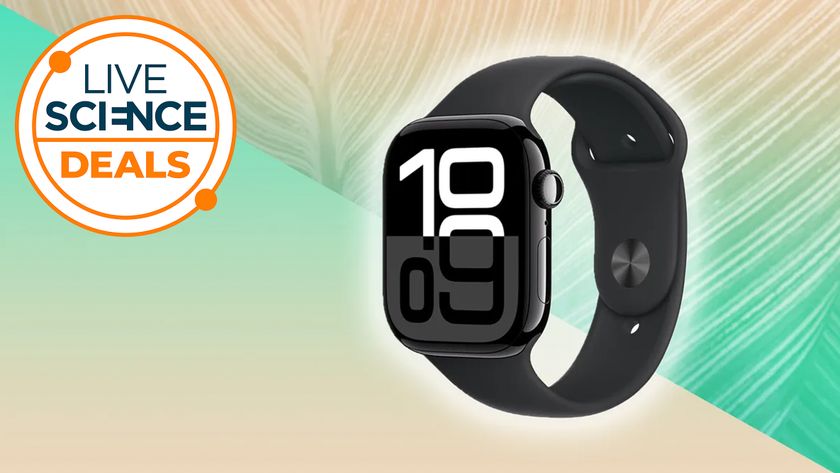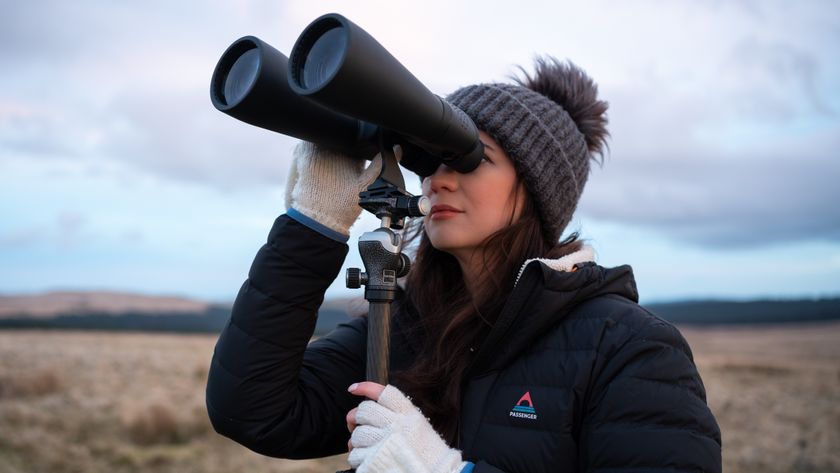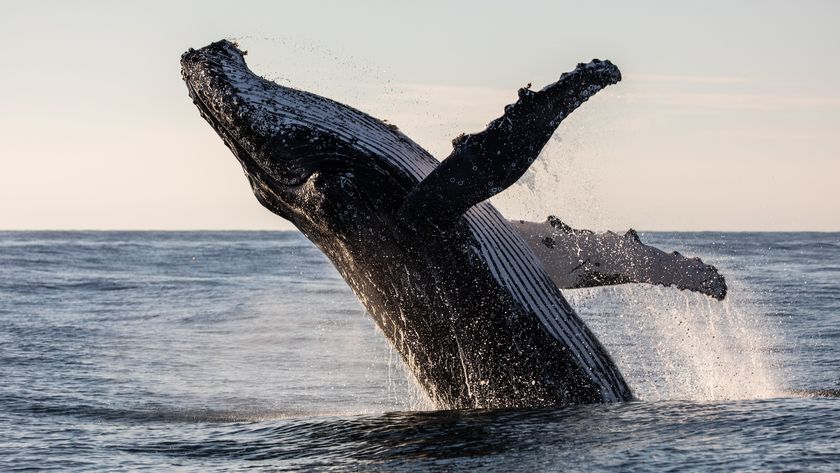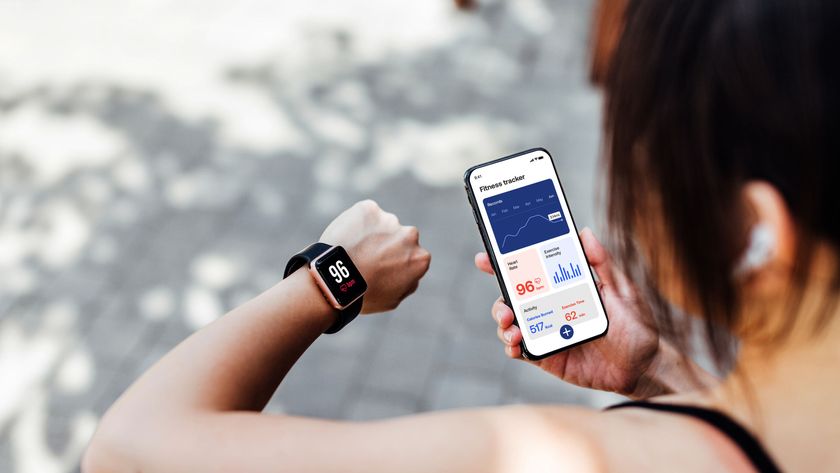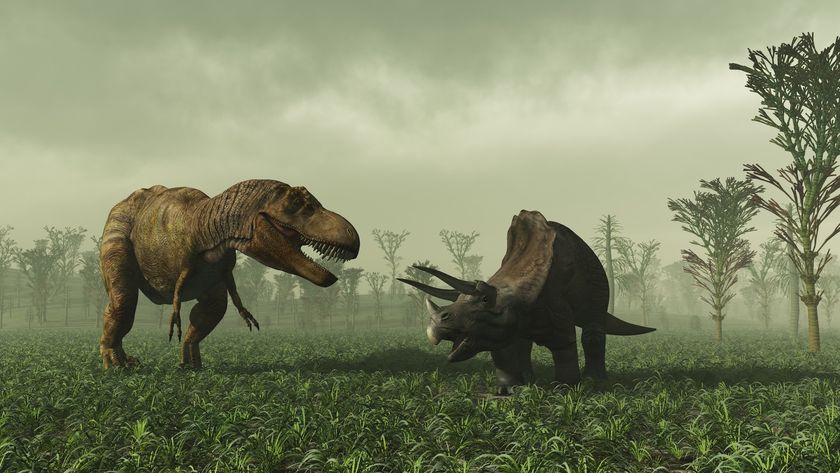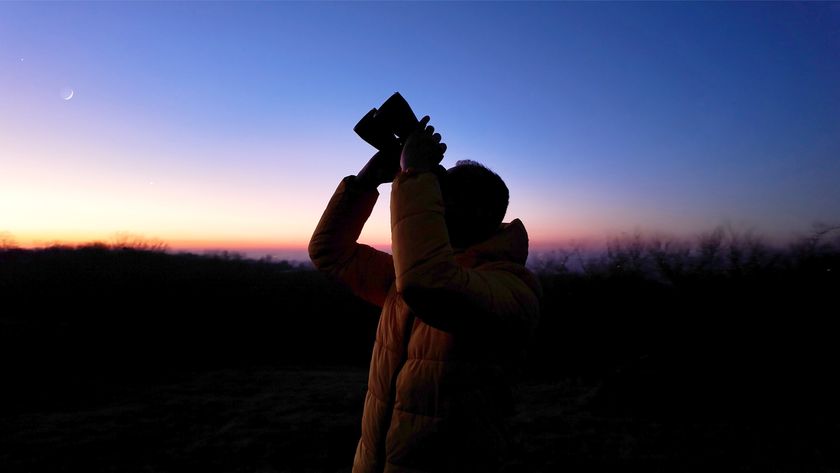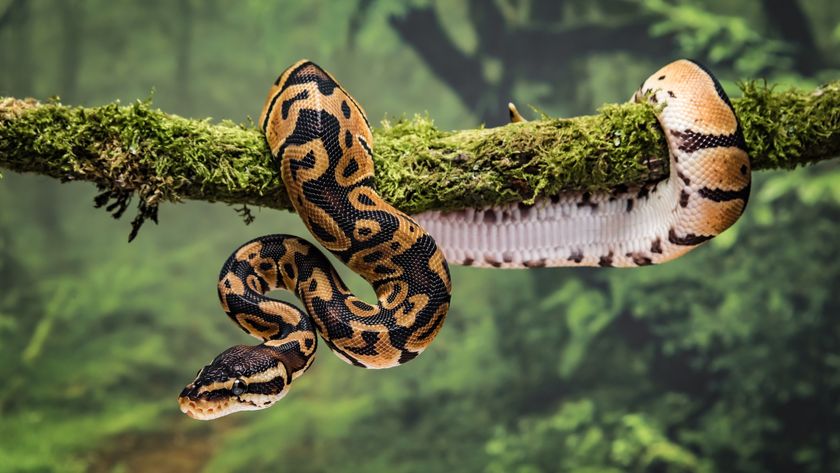Best microscopes for kids 2025
Encourage children to love science by showing them the world in miniature with some of the best microscopes for kids — here are our favorite models.
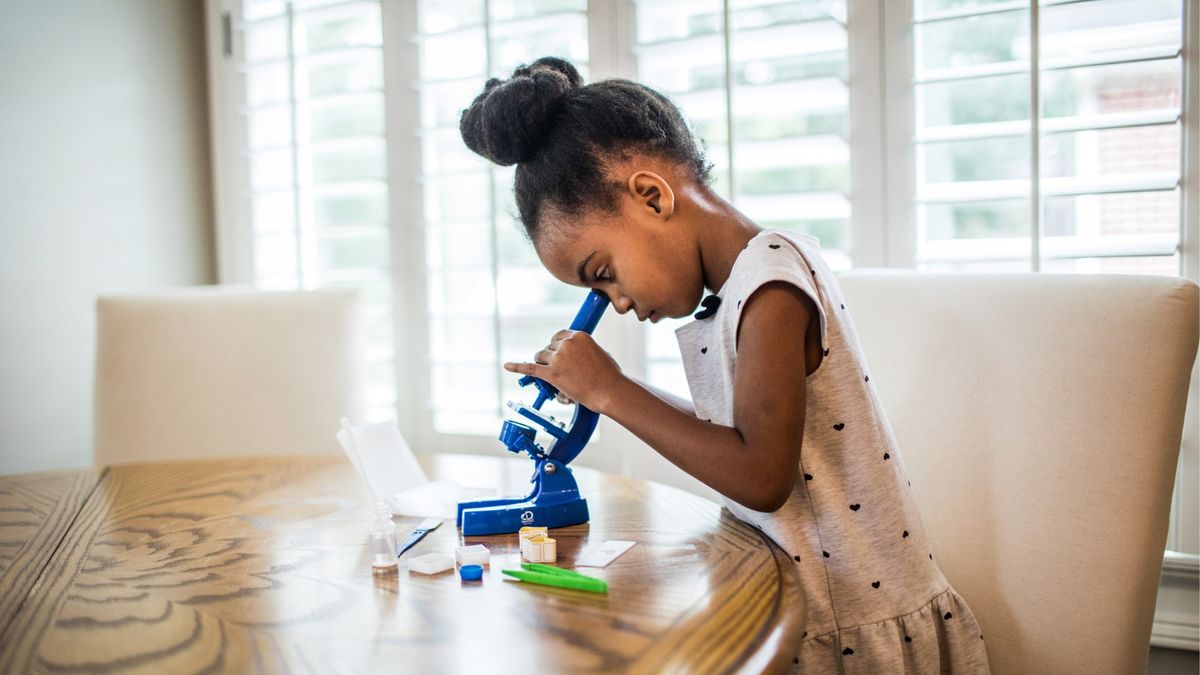
The best microscopes for kids allow children to discover the world in miniature. As these naturally curious little scientists journey around the big wide world, we see them inevitably become interested in the very largest and very smallest creatures in the natural world.
Small bugs and other creatures are hard to see without the right equipment, though, but that's where a microscope for children comes in. Simpler, less expensive and easier to use than the best microscopes for students, microscopes for kids make the world of the tiny more accessible for small hands and eyes.
But get the right microscope and even bacteria are visible under the magnifying instrument. While there's a range of price points in this guide, the slightly more expensive compound microscopes are the best due to their superior quality optics and the ability to interchange magnifying objectives. Simple microscopes like the brightly colored versions have fewer features, but that means less to go wrong or break, so they are better suited to the youngest of observers.
Want more home science equipment for your young learners? Our guide to the best science kits for kids has all kinds of fun experiments for them to experience. And if your kids are a little older, you can also check out our guide to the best microscopes for students too.
Quick list
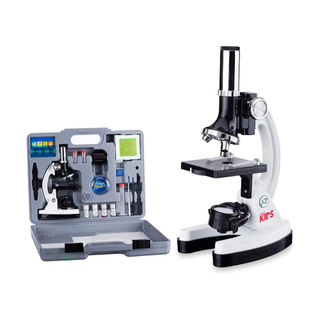
Best overall
This powerful compound microscope is a complete kit with impressive magnification and everything kids need to get started, all for under $50.
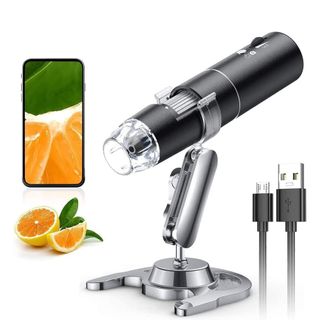
Best cheap microscope
This small and portable digital microscope offers up to 1000x magnification. It's fully digital and designed to work with your Android or iOS device. It's super affordable and great for all ages.
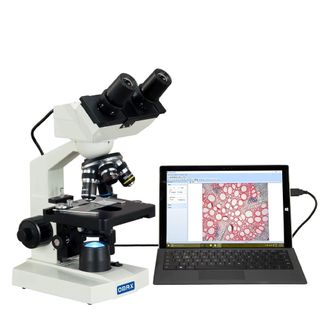
Best for biology students
It's the most powerful microscope in this guide but also the most expensive. A fantastic option for older kids with a serious interest in studying biology.
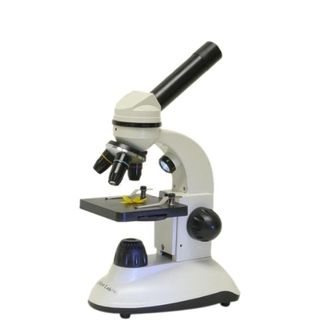
Best for budding scientists
With 400x magnification, durable construction and high-quality optics, this microscope is pricier than other models, but it's a great step up from your kid's first microscope.
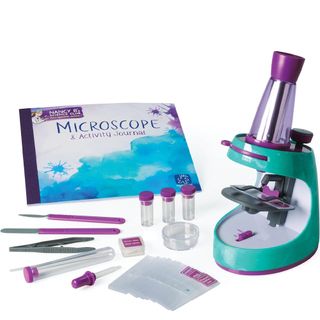
Best for under 12s
A powerful microscope kit great for kids under 12, it comes with all the bits you need to get started for under $30 — and the 400x magnification is great for a scope this affordable.
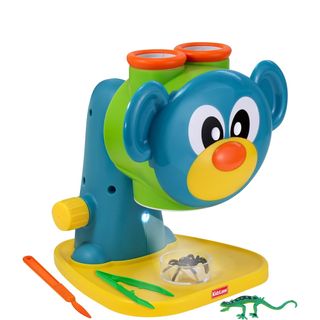
Best for pre-schoolers
Built with the younger crowd in mind (ages 3+) this science toy is a great way to spark your child's interest in science.
The best microscopes for kids we recommend in 2025
Why you can trust Live Science
Best microscope for kids overall
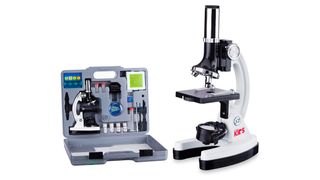
AmScope 120X-1200X Kids Beginner Microscope STEM Kit
Our expert review:
Specifications
Reasons to buy
Reasons to avoid
✅ You want a complete starter kit: This comes with slides, tweezers, specimen pots and sample specimens to get going right away.
✅ You want something durable: It has a sturdy metal frame but is still lightweight enough to carry around.
❌ You want top quality optics: This scope uses plastic lenses instead of glass which means less detailed images.
❌ You want good quality accessories: Although there are a lot of them, they do feel cheaply made.
🔎 AmScope 120X-1200X: This is a basic microscope for kids and is a decent starting point to develop science enthusiasm.
At the top of our list you’ll find the AmScope 120X-1200X 52-pcs Kids Beginner Microscope STEM Kit (M30-ABS-KT2-W). This powerful compound microscope for kids is more than just a simple tool — it’s a complete kit that comes in a carry-case and even includes the batteries required.
The 52-piece set also comes with a neat brine shrimp experiment and all the accessories a child will need to get started. The scope itself is well-built with an all-metal frame and offers easy magnification adjustments and a color filter wheel. There's a reflecting mirror for natural illumination as well as a built-in LED light for direct illumination of your subject.
The scope also features a built-in rotating color filter wheel and has a power indicator on the rotating turret. The kit also comes with a selection of materials and insects to view under the scope.
If you're looking for a microscope to keep your kids entertained and help them learn that won't break the bank, then the AmScope 120X-1200X 52-pcs Kids Beginner Microscope is a fantastic choice.
Attributes | Notes |
Design | 'Traditional' looking microscope |
Performance | Lots of magnification but image clarity isn't the best at higher levels |
Functionality | Includes a full STEM kit with plenty of accessories |
Best cheap microscope
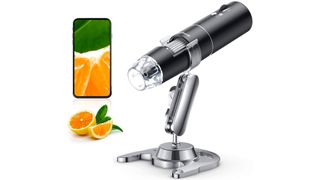
Skybasic Digital Microscope
Our expert review:
Specifications
Reasons to buy
Reasons to avoid
✅ Your child loves tech: This microscope lets your child explore the microscopic world with modern technology.
✅ Sharing images: Because images are viewed on a screen, multiple people can examine the image at once.
❌ You want to reduce screen time: With this miscroscope, images are viewed on a phone.
❌ You want high resolution images: The camera is 2MP which is unsuitable for studying objects in high detail
🔎 Skybasic Digital Microscope: This is a convenient digital telescope where you can capture and share discoveries in a convenient way.
Ditching the manual microscope controls that you’d normally expect from this technology (for example, bulky adjustment knobs and dials), the Skybasic Digital Microscope is as portable as it is versatile.
This 50X to 1000X microscope is wireless and designed to work in conjunction with your Android or iOs device, though you can also use it on a Windows or Mac computers via the USB cable.
The clever little tool streams pictures and videos of magnified images right to your phone from up to 33 feet away — no wires required. It's also very light and portable, so you can take it with you for outdoor adventures with children, whether its studying insects, plants or minerals.
It's essentially a fixed focus magnifying glass, rather than a traditional microscope, and the 2-megapixel camera catches beautiful 1080p images. The built-in LED lights can also be adjusted for proper brightness levels. The controls for this microscope are super simple, too, which means your kid will probably figure out how to use it quicker than you will. This one is perfect for viewing plants, insects, rocks and minerals.
Attributes | Notes |
Design | Plastic, lightweight, handheld |
Performance | Decent image quality with 50-1000x magnification |
Functionality | USB/Wi-Fi connectivity |
Best pocket microscope for kids
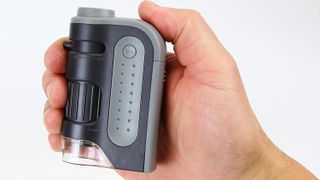
Carson MicroBrite Plus LED Lighted Pocket Microscope
Our expert review:
Specifications
Reasons to buy
Reasons to avoid
✅ You want something lightweight and portable: This little package is perfect for on-the-go exploration.
✅ You want something very easy to use: The controls to zoom and focus are very easy to use.
❌ You don't want to use batteries: This model requires 1 x AA battery to operate the LED light.
❌ You child doesn't have a steady hand: It can be challenging to inspect thicker or 3D objects as it has to be held still and close to the surface.
🔎 Carson MicroBrite Plus: This is a fun and affordable microscope for casual exploration, not precise study.
The Carson MicroBrite Plus LED Lighted Pocket Microscope is a super portable gadget that is great for viewing coins, plants, seashells, rocks and minerals, and also nicely proves that science-based backyard exploration doesn’t have to break the bank.
The portable handheld little stereo microscope is small enough to slip into any pocket, making it a perfect and very budget-friendly tool for teaching kids in the field or in the classroom.
The battery-powered LED light illuminates objects in the palm of your hand. The aspherical lens system is surprisingly robust, resulting in bright, clear imagery all around.
Considering its size and price, it also has a surprisingly good and versatile magnification range of 60x to 120x, though as it is handheld, the child will need to have steady hands in order to get a good image.
For casual summertime beach excursions to winter woodland walks, this is a great complement to your next nature hike. Curious minds of all ages will enjoy the Carson MicroBrite Plus LED Lighted Pocket Microscope.
Attributes | Notes |
Design | Ultra compact and lightweight |
Performance | Sharp and clear optics (with a steady hand) |
Functionality | Easy to focus, battery powered |
Best microscope for biology students
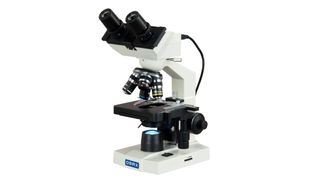
OMAX MD82ES10 40X-2000X Digital LED Compound Microscope
Our expert review:
Specifications
Reasons to buy
Reasons to avoid
✅ You're looking for a premium microscope: If you have a true science fan at home, this is an excellent long-term device.
✅ Your child wants to share their findings: There is a built in 1.3MP camera to stream images to a computer.
❌ You don't want to spend a lot: This is an expensive microscope for a child, but worth it if you have a keen and committed youngster.
❌ Your child is a beginner: A simpler model with easier controls and lower magnification would be more suitable.
🔎 OMAX MD82ES10 40X-2000X: This is a high-quality microscope that can be used to explore a wide range of specimens. It premium price means is best reserved for kids serious about science.
Is your kid a scientific prodigy? Then maybe you should give their lab an upgrade. For high-school students who are ready to take their experiments to the next (micro) level, the OMAX MD82ES10 40X-2000X Digital LED Compound Microscope looks as professional as its name sounds.
The 45 degree inclined 360 degree swiveling binocular head has a built-in 1.3-megapixel USB camera that’s compatible with both Mac and Windows, allowing the microscope to take pictures and video clips of various projects.
The optical glass elements are professional quality and this digital microscrope offers eight LED-illuminated levels of magnification: 40X-80X-100X-200X-400X-800X-1000X-2000X.
There are two coaxial knobs for coarse and fine focusing, and the mechanical stage is easy to adjust. There’s also a sliding interpapillary distance adjustment, which means the microscope is customizable to virtually any face size.
For the more premium price, it would have been nice for OMAX to throw in a carrying case (though you can purchase one from the same brand separately), but if you’re raising the next Doogie Howser, your child’s eyes will certainly light up like an LED bulb when they see this top-of-the-range microscope. This scope is perfect for dissection experiments, internal cell structures, hair and skin tissue.
Attributes | Notes |
Design | Professional build and style with a metal frame |
Performance | High-quality optics for kids serious about microscopy |
Functionality | Built in camera, multiple objective lenses |
Best for budding scientists
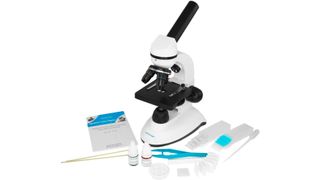
My First Lab Duo-Scope Microscope
Our expert review:
Specifications
Reasons to buy
Reasons to avoid
✅ Your child wants to view both slides and solid objects: This is a compound and stereo microscope in one.
✅ You want immediate exploration: The accessories include prepared slides, blank slides and several accessories to get going straight away.
❌ You want a sturdier design: The plastic build feels less durable compared to some other metal models.
❌ You want fine focus: There is only a coarse focus knob so you can't make fine focus adjustments.
🔎 My First Lab Duo-Scope Microscope: This is a great dual-purpose microscope that offers solid performance at a reasonable price.
Best for viewing dissection experiments, internal cell structures, plants, rock and minerals. The My First Lab Duo-Scope Microscope (MFL-06) has a lot to offer in the hands-on learning department. This 50-piece kit, like other kits, comes with all sorts of scientific accessories.
There's an experiment guide full of helpful tips, blank slides, stain, lens paper, labels, pipette, petri dish, a plastic test tube, tweezers and more, making it great for the classroom but also an excellent present for keen young scientists to use at home.
The lightweight design is durable enough for outdoor use, and the monocular eyepiece allows up to 400X magnification for whatever the next experiment entails; it functions as a compound and stereo microscope in one.
It's more expensive than other microscopes on this list, but it’s also a higher-quality tool; the optics are made from real glass (as opposed to plastic, like some models), and the durable metal-and-plastic body is built to last. Each Duo-Scope comes with a 10X eyepiece as well as 4X, 10X and 40X glass objectives which provide 40X, 100X and 400X total magnification. For preteens with a serious interest in science, this could be their first mini-lab.
Attributes | Notes |
Design | Sturdy but kid friendly |
Performance | 40-400x magnification with decent optics |
Functionality | Works as both a compound and stereo microscope. |
Best microscopes for pre-teens
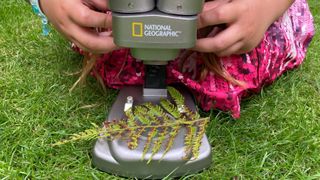
Specifications
Reasons to buy
Reasons to avoid
✅ You want to look at both slides and solid objects: This dual-function design, and it is easy to switch between modes.
✅ You want your kids to explore right away: It comes prepared with a range of slides, containers and a brine shrimp experiment.
❌ You want more magnification: It goes up to 50X magnification, which is decent enough for exploring a variety of specimens but not for cells, bacteria, etc.
❌ You prefer a sturdier construction: This scope is plastic, so it feels less durable than metal microscopes.
🔎 National Geographic Dual LED Student Microscope: A good starter scope for kids and casual users, but it lacks the magnification and fine focus for more advanced uses.
These days, National Geographic is more than just a bright yellow magazine. Much more, in fact. The iconic wildlife brand offers a variety of science-centric toys (err, tools) for kids, and their Dual LED Student Microscope is one of our top picks. During our full National Geographic Ultimate Dual Stereo Microscope review, we thought it was a great all-in-one package for young scientists.
In order for a tech toy to be considered STEM-friendly, it needs to encourage a higher level of education in four disciplines (science, technology, engineering and mathematics), and this microscope fills the bill. It comes bundled with over 50 accessories for learning, including 10 prepared nature slides, a petri dish, a mini geode, two sets of optical lenses (20X and 50X), and a comprehensive learning guide. Thanks to a pair of complementary LED lights, you can use this microscope to view slides or 3D objects with the flip of a switch. It's best for viewing internal cell structures, skin and tissue, rocks and minerals.
Like the AmScope microscope, this one comes with its own brine shrimp experiment, complete with shrimp eggs and a hatchery station. Your kid will be so engaged, they won’t realize they’re absorbing so much knowledge.
Attributes | Notes |
Design | Lightweight and durable |
Performance | 50x magnification is ok, suitable for basic objects |
Functionality | Comes with prepared slides and specimens |
Best for kids under 12
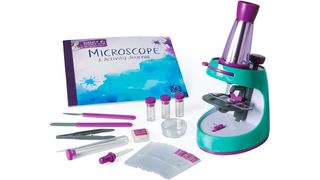
Educational Insights Nancy B's Science Club Microscope
Our expert review:
Specifications
Reasons to buy
Reasons to avoid
✅ You want something built specifically for kids: It is brightly colored and looks 'fun.'
✅ You want an affordable 'real' microscope: Although this looks like a toy, it is a working microscope to encourage hands-on learning.
❌ You want the best quality optics: The lenses are plastic so you won't get the image quality you would from glass lenses.
❌ You need something durable: This microscope is made from lightweight plastic so it might not last long with rough handling.
🔎 Educational Insights Nancy B's Science Club Microscope: A good introductory microscope for younger kids to 'play' with. You'd want something more scientific for more advanced work.
The best microscopes for kids, particularly younger ones, aren’t just standalone devices — they come bundled with all sorts of useful extras. That's certainly the case with the Educational Insights Nancy B's Science Club Microscope, another colorful option that gets consistently high user reviews.
Genuine scientific research is all about data collection, and this microscope gets that ball rolling with a 22-page activity journal and suggested experiments to help kickstart a love of scientific exploration. It's a gentle way to introduce the idea of the scientific method that should go down very well with curious kids.
The kit also includes slides, pipette, test tubes and other basics to make up a child's 'first lab'. The only drawback is that the construction and design is definitely best for younger children and may not prove the most robust over the long term. For older kids or those who are really keen, there are more robust and premium kits available to upgrade to.
Powered by two LED lights (and 3 AAA batteries), the microscope itself can achieve an impressive range of 30X to 400X magnification, which is perfect for getting up close and personal with all the rocks, plants and bugs your backyard has to offer. Let the specimen collection begin!
Attributes | Notes |
Design | Child-friendly and durable |
Performance | 400x magnification but no good for advanced use |
Functionality | Comes with activity guides and useful accessories |
Best interactive microscope for young kids
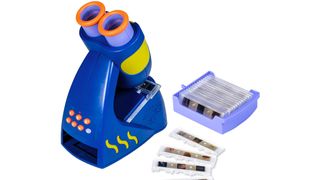
Educational Insights GeoSafari Jr. Talking Microscope
Our expert review:
Specifications
Reasons to buy
Reasons to avoid
✅ You have children aged 3-7: This microscope is designed specifically for preschool and elementary kids.
✅ Your kids benefit from narration: The built-in narration is provided by Bindi Irwin
❌ You want a real microscope: This is more of a toy than a scientific tool. The images are pre-set slides with images on them.
❌ You want a rechargeable or mains powered device: Like a lot of toys, this model requires AAA batteries.
🔎 Educational Insights GeoSafari Jr. Talking Microscope: An interactive microscope for very young children aged 3-7 to combine fun and learning.
The Educational Insights GeoSafari Jr. Talking Microscope is a casual first classroom in a box that will appeal to young children, particularly those who may even recognise the voice that accompanies the kit.
That’s because this novel microscope features the narration of young Australian conservationist Bindi Irwin, who teaches your child more than 100 interesting factoids about plants and animals through an integrated microphone.
The built-in storage compartment within the scope houses 20 slides (featuring three images per slide), which can be used for two different modes of play: Fact or Quiz. In the former mode, the microscope identifies these images out loud, reciting fun facts for your child to learn; in the latter mode, Bindi quizzes your child on their general knowledge of each slide.
The standard model comes with English, Spanish, French and German language audio options, while a second model includes Mandarin, Japanese and Korean.
These interactive, STEM-friendly features make the Educational Insights GeoSafari Jr. Talking Microscope one of the best microscopes for young kids — particularly those in preschool. Hopefully, it’ll keep them busy for hours on end and start a love of science that will see them graduating to other, more 'grown up' versions of the kits in this guide.
Attributes | Notes |
Design | Bright, kid friendly with easy-to-use buttons |
Performance | Clear but basic images with pre-drawn slides |
Functionality | Guided learning with narration |
Best microscope for pre-schoolers
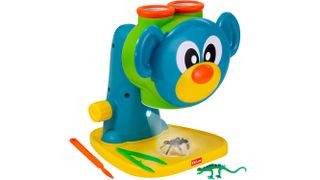
Kidzlane Microscope Kit for kids
Our expert review:
Specifications
Reasons to buy
Reasons to avoid
✅ You want a real microscope: While this is a child's toy, it does offer adjustable magnification.
✅ A child-friendly design: This microscope has a playful bear-like character to encourage learning.
❌ You want a rechargeable or mains-powered device: This model requires AAA batteries.
❌ You want more magnification: 8x is low for a microscope, though enough to delight a curious toddler.
🔎 Kidzlane Microscope Kit for kids: A good introduction to microscopes for very young children. The real magnification makes it more realistic than relying on pre-printed images.
As its colorful branding and appealing bear-like character implies, the Kidzlane Microscope Science Toy for Kids was built with the younger child firmly in mind. This beginner microscope, meant for ages 3 and up, is bound to spark their curiosity as they examine everyday objects in finer detail.
Designed specifically for younger children with small hands (ages 3 and up), you also needn’t worry about sharp edges or having to help them adjust things designed for adult hands.
Another STEM-friendly entry to this list, the Kidzlane Microscope comes with tweezers, a (plastic) scalpel, and pretend spider and lizard specimens, all of which should be enough to make the child feel like they have their own lab.
The scope itself does only magnify to x8, which is not much for a more serious scientific study even in schoolchildren, but is plenty for the pre-school age group and there are some excellent 'next step' kits and scopes in this guide for a child who wants to graduate to slightly more powerful magnification and a more in-depth exploration of nature.
Aside from building on their scientific curiosity, they will also build hand-eye coordination as they position objects beneath the viewfinder, and the included activity book encourages critical thinking skills with a variety of fun experiments.
Attributes | Notes |
Design | Child friendly novelty design |
Performance | 8x magnification is low for a microscope |
Functionality | Includes a variety of accessories |
Best under $20 microscope for pre-schoolers
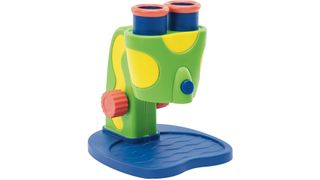
Educational Insights GeoSafari Jr. My First Kids Microscope
Our expert review:
Specifications
Reasons to buy
Reasons to avoid
✅ You want something made specifically for children: This microscope has been created with 3 to 6-year-olds in mind.
✅ Your child would prefer a dual eyepiece: children can use both eyes without squinting into one tube.
❌ You have an older child: This is designed for little people with little hands
❌ It's pretty expensive for a toy: Although it won't break the bank, value for money is questionable.
🔎 Educational Insights GeoSafari Jr. My First Kids Microscope: A great way to introduce pre-schoolers to STEM learning.
The Educational Insights GeoSafari Jr. provides kids with an easy, hands-on experience with their first microscope. With large knobs and two extra-large eyepieces, they won’t have any trouble looking at objects they find or using the scope with smaller hands.
The large scope tray also allows for examining larger things like leaves, rocks, or flowers. Starting at 2.5x magnification, kids can gradually adjust the visual field for a chance to learn about their findings and explore nature without becoming overwhelmed.
Not only does this enhance their learning experience, but it also allows them to go at their own pace! The fun isn’t limited to the microscope, either. A host of free activities are included with this package, along with 12 pre-designed slides.
To use this microscope, all you need are three AAA batteries. The dual eyepieces are a particularly good touch for younger children, allowing them to clearly see their discoveries without having to squint into a single tube, which can be very off-putting or difficult for young ones.
Attributes | Notes |
Design | Bright, durable, lightweight |
Performance | 8x magnification giving clear images |
Functionality | Easy to use, additional learning materials are provided |
Comparison
Product | Rating | Microscope type | Max magnification | Age range |
|---|---|---|---|---|
AmScope 120X-1200X Beginner Microscope STEM Kit | ★★★★½ | Compound | 1200X | 6+ |
Skybasic Digital Microscope | ★★★★ ½ | Digital | 1000X | 5+ |
Carson MicroBrite Plus LED Lighted Pocket Microscope | ★★★★ | Stereo | 120X | 8+ |
OMAX MD82ES10 40X-2000X Digital LED Compound Microscope | ★★★★ ½ | Compound / Digital | 2000X | 10+ |
My First Lab Duo-Scope Microscope | ★★★★ | Stereo / Compound | 400X | 9+ |
National Geographic Dual LED Student Microscope | ★★★★ ½ | Stereo / Compound | 50X | 8+ |
Educational Insights Nancy B's Science Club Microscope | ★★★★ | Compound | 400X | 8+ |
Kidzlane Microscope Kit for kids | ★★★★ | Stereo | 8X | 3+ |
Educational Insights GeoSafari Jr. My First Kids Microscope | ★★★★ | Stereo | 5X | 3+ |
FAQs
What is the best beginner microscope for kids?
As curiosities swap and change it might be wise to refrain from dropping big dollar on a microscope for a child, especially if this is their first. For young beginners we'd recommend the Educational Insights Nancy B's Science Club Microscope. It has 400X magnification, includes an activity journal for tracking observations and comes with a plethora of additional accessories to get kids in the science mood.
What type of microscope should I buy for a child?
We recommend you buy the best microscope you can afford whilst balancing this with cost, features, optical performance and durability. Younger observers are more likely to drop, knock or bump a microscope during use so it's important to find one that is resilient.
For pre-schoolers we'd recommend the Educational Insights GeoSafari Jr. Talking Microscope because of its attractive colorway and also because it talks, containing two learning modes.
How do I choose the best microscope for kids?
Before introducing your family to the microscopic world of insects and plants, consider these factors:
Budget - Most kid-friendly microscopes have a price point of $50 or less, but there are plenty of premium picks that cost $75 or more. These days, you can get a cheap microscope for under $30; low-end models usually have weaker magnifications, cheaper build quality and fewer bundled accessories. (For preschool-level microscopes, however, weak magnification is actually preferred.)
Focus and magnification - For small, fidgety humans, overly powerful optics might actually be counterproductive. When it comes to your budding biologists, here's a rule of thumb: The younger the child, the lower the magnification. Magnifications between 5X and 400X are common recommendations for kids under the age of 10. For older investigators, consider microscopes with more powerful optics.
Note: Monocular microscopes work well up to 1000X, but for higher magnification levels, binocular microscopes are a necessary investment.
Size, shape and build quality - Look for sturdy build materials, such as aluminum alloy and heavy-duty plastics. If the microscope is for someone under the age of 10, you’ll probably want one that can take a little abuse. Some microscopes are specifically built for tiny fingers, while others can be used by explorers of all ages. For children under 5, look for extra kid-friendly features, like rounded edges, rubberized (shockproof) construction and padded eyepieces.
High-power vs. low-power - Low-power (ie, “stereo”) microscopes are useful for viewing opaque objects (think rocks and coins); the light source is divided into two separate paths to produce a 3D view. High-power (ie, “compound”) microscopes are meant for viewing translucent materials such as plant cells or viral bacteria; there is only one light source to produce a flat-plane view.
Light sources - All microscopes require a light source; the most common ones are LED, halogen and fluorescent. On account of their brightness and longevity, LED lights are pretty popular when it comes to microscope hardware. If your microscope uses multiple bulbs, check to see if it comes with any replacements; some bulbs are trickier to replace than others.
Extra features and accessories - Some microscopes come with just the basics, but the best microscopes for kids include useful accessories, such as activity books, specimen slides, carrying cases, sample experiments and complementary science tools.
Latest updates
Recent updates
February 26, 2025: More info added into the body copy, comparison table changed to compare specs.
How we test the best microscopes for kids
Our expert reviewer, Heather Barker, who is Head of Science at a prep-school in England, gives her students a hands-on experience with these microscopes out in the field, observing everything from vintage invertebrates, resin-mounted invertebrates, flowers, seeds, prepared slides, shells, moss, coins and rocks.
Her knowledge and expertise on biology then informs the reviews we publish to give the children's experience alongside her own scientific evaluation on each microscope.
We have chosen a range of microscopes for all ages and budgets to ensure there is something for everyone in this guide.
Sign up for the Live Science daily newsletter now
Get the world’s most fascinating discoveries delivered straight to your inbox.
Bailee Boggess McCoy is a freelance writer and editor with a focus on adoption, clinical research, geriatrics, psychology, culture, social work, neuroscience and more. She has written for many health websites and publications, along with doing many ghostwriting projects and email campaigns. In addition to her work as a writer, she has worked as a researcher at an Alzheimer’s disease research facility with projects focusing on Black older adults and racial trauma. Her scientific research has been presented at the Alzheimer’s Association International Conference and published in the Journal of Alzheimer’s Disease and Associated Disorders. She received her Bachelor’s degree in Psychology from Georgetown College in 2018. She also studied neurolinguistics and developmental psychology at the University of Oxford. By the end of 2021, she will have her Master's in Social Work degree. When she’s not writing or researching, she enjoys playing with her dog, trying new cuisines, reading, and traveling. She’s also a true crime enthusiast, passionate creative, and a lover of all things poetry.
- Tantse WalterContributing Writer
- Kimberley LaneE-commerce writer

